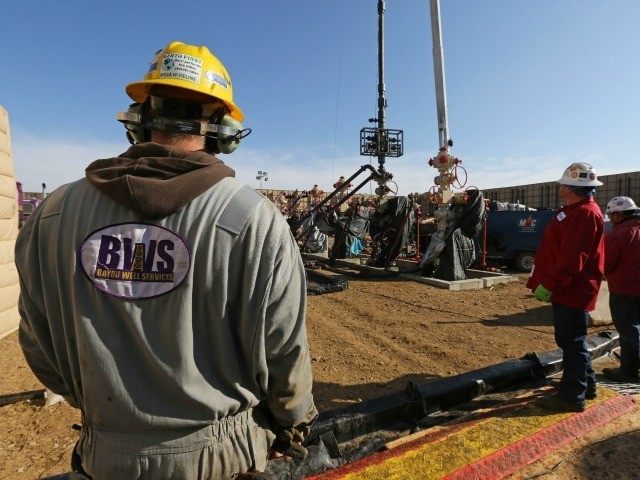The California Division of Conservation has received a 543 percent increase in “Oil & Gas Notices” this year, as a Golden State fracking is set to lift the U.S. to a production record.
California’s field oil production peaked at almost 1.2 million barrels a day in January 1986, but steadily fell by 62 percent to a post-1940 low of 443,000 barrels a day in February 2017. Many blame California’s fiscal crisis on the shriveling of oil & gas extraction taxes.
Although California has some of America’s best shale formations for hydraulic fracturing, the oil drilling technique requires 1 to 13 million gallons of water. Due to the five-year drought, California missed the initial boom, but the combination of record rainfall, record snowpack, and full reservoirs this year has positioned California to lead the next leg of the fracking boom.
American oil production hit its all-time annual peak of 9.6 million barrels per day in 1970, before falling to a 59-year low of 5 million barrels per day in 2008. But the U.S. fracking boom drove production back to its peak in June 2015, before the OPEC cartel dropped the price of oil from over $100 a barrel to under $30, according to the Energy Information Agency.
U.S. oil and gas drilling also peaked in June 2015 at 1938 wells drilled, before falling by 77 percent to a 70-year low of 447 for the week of May 26, 2016. But shockingly, oil production in the U.S. only fell by 11 percent to 8.5 million barrels a day in early September 2016, and has roared back to 9.3 million barrels a day in mid-May 2017.
The 2016 OPEC forecast predicted that lower prices would devastate the U.S. fracking boom by driving domestic production back to about 7.5 million barrels a day and keeping it there for the next five years, allowing OPEC to drive the price of oil back to about $90 a barrel.
But U.S. frackers cut their costs of drilling by 40 percent as the distance for horizontal drilling increased from 1.1 mile in 2008 to a 29.1 miles in April. Average fracking well break-even costs have declined from $70 a barrel in 2014 to around $40 today, ad are expected to fall to $25 a barrel by 2019.
To prevent the current $50-per-barrel price of oil from collapsing again, OPEC extended its 1.8 million barres-per day production cut for another nine months on May 25.
The U.S. Energy Information Agency’s May 9 forecast predicts that the United States will set an all-time annual production record of 9.96 million barrels a day in 2018. The agency’s report does not break out state-level oil and gas production growth. But with the spectacular growth in Oil & Gas Notices, California fracking is set to be a national leader.

COMMENTS
Please let us know if you're having issues with commenting.